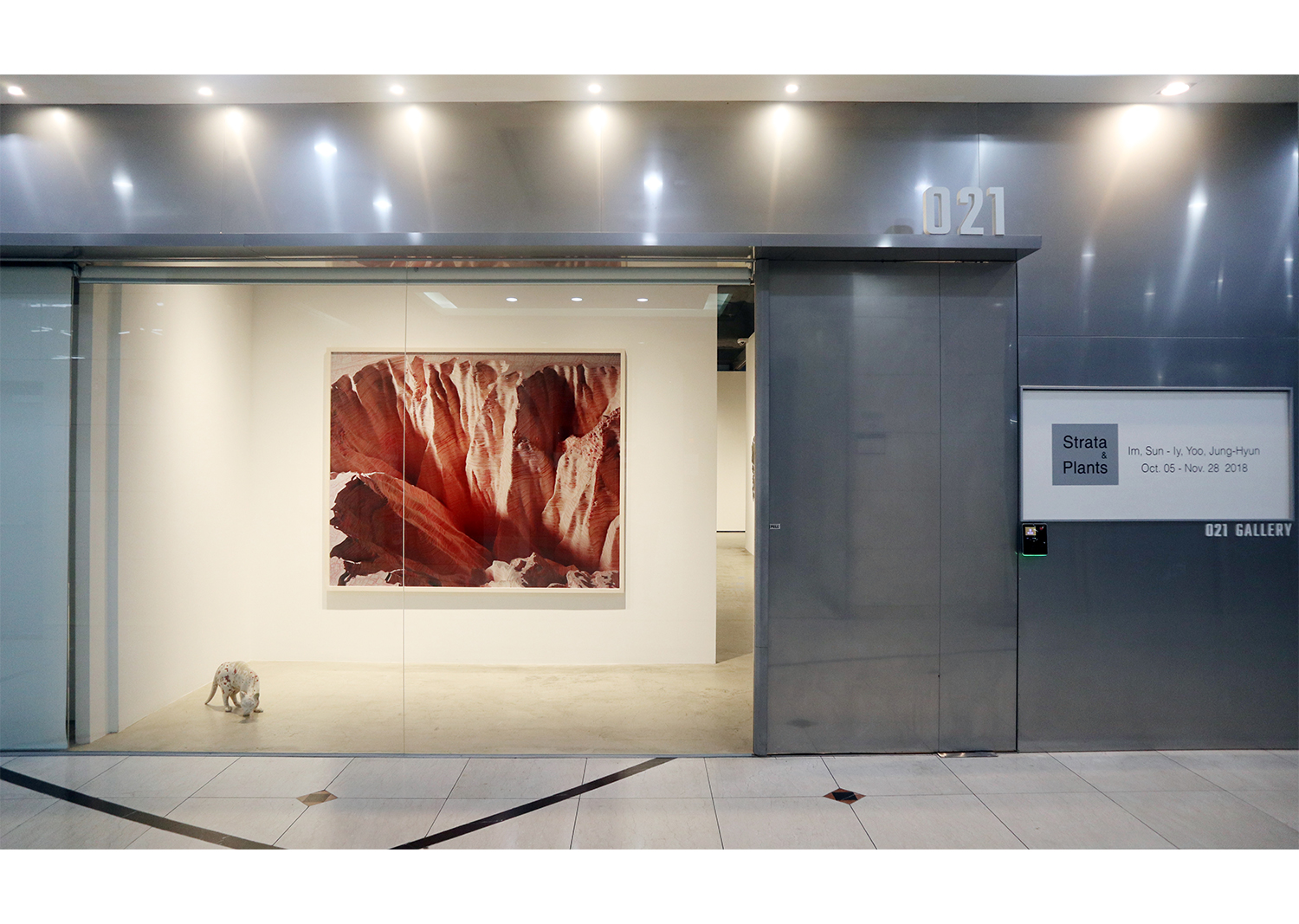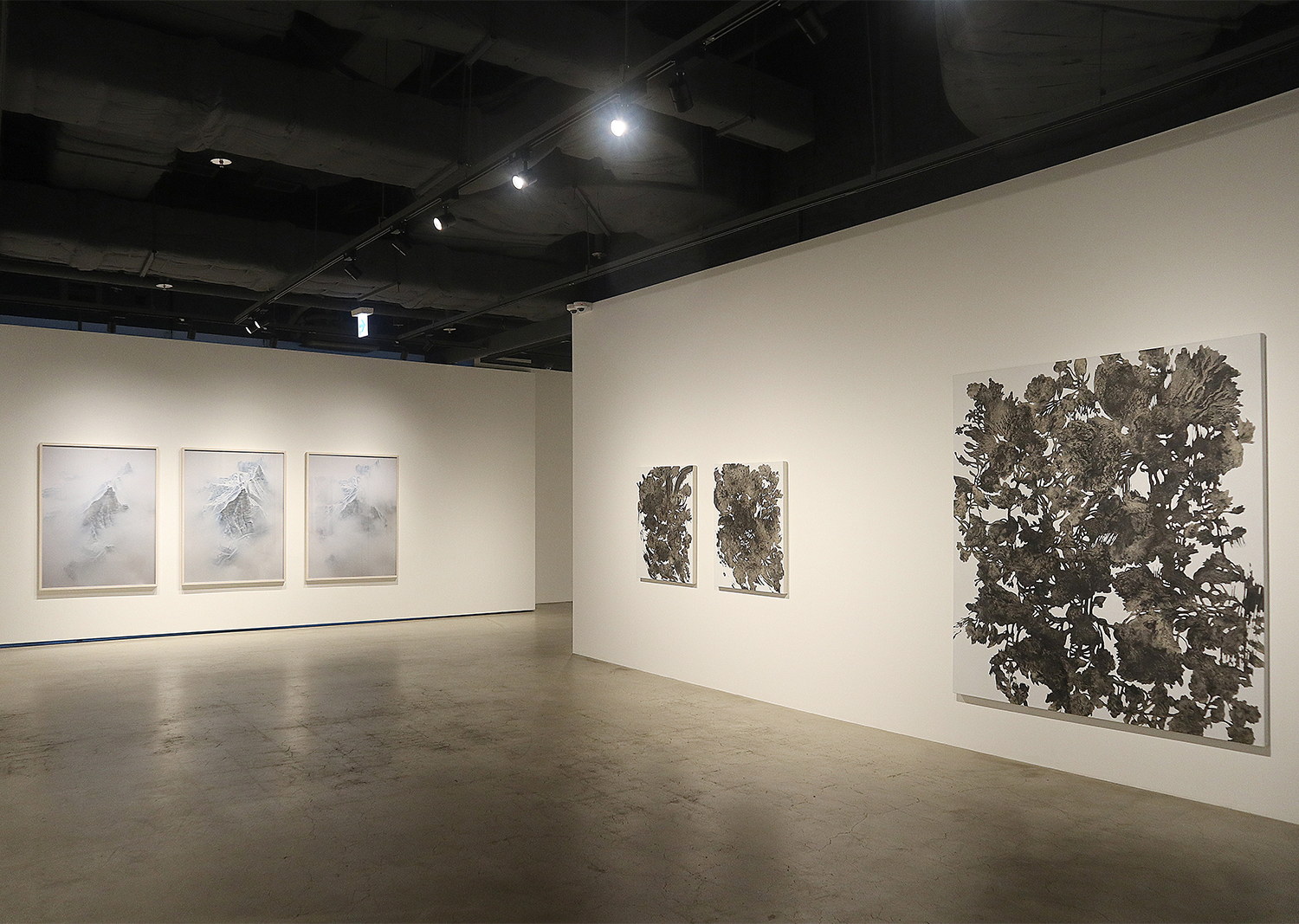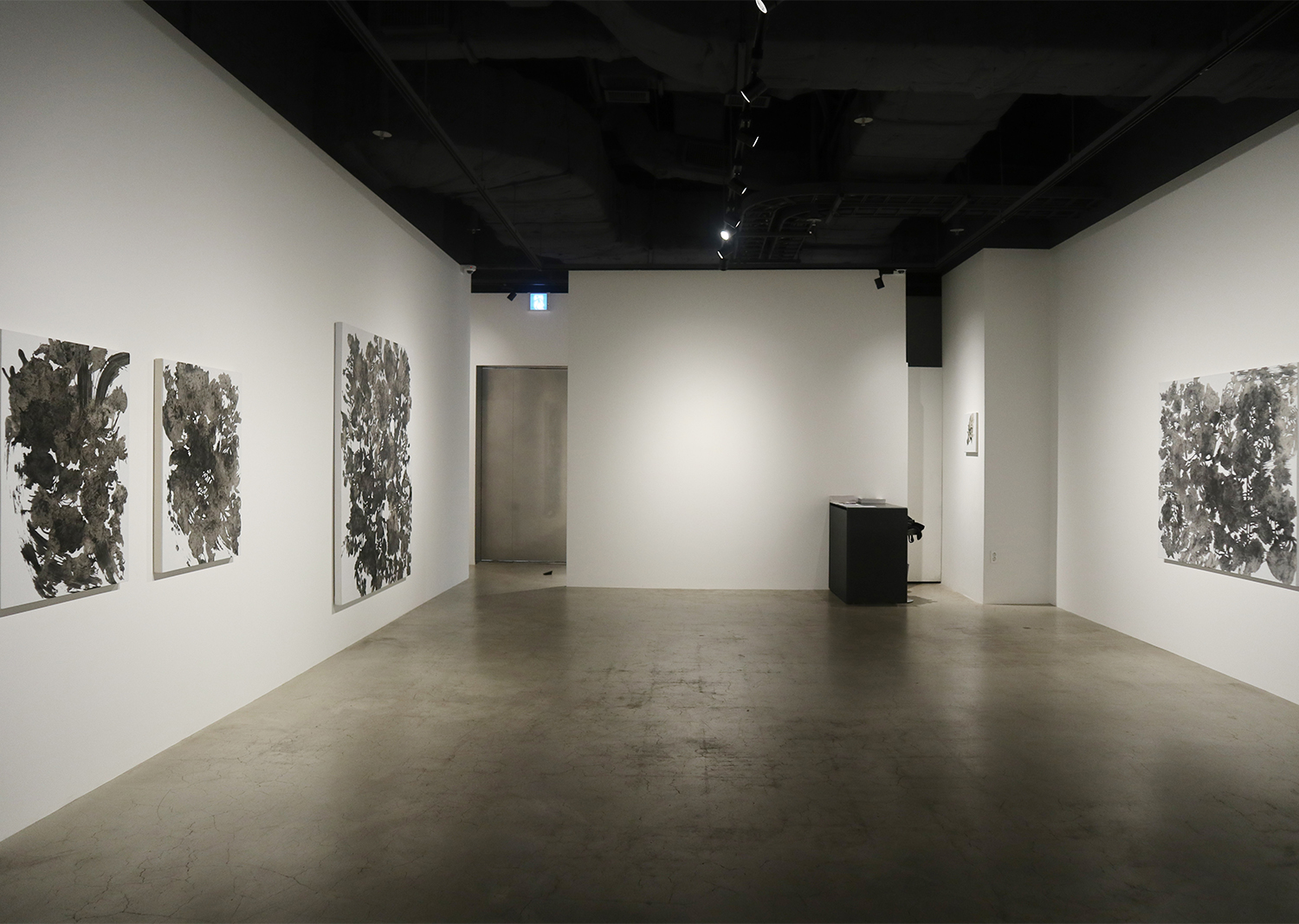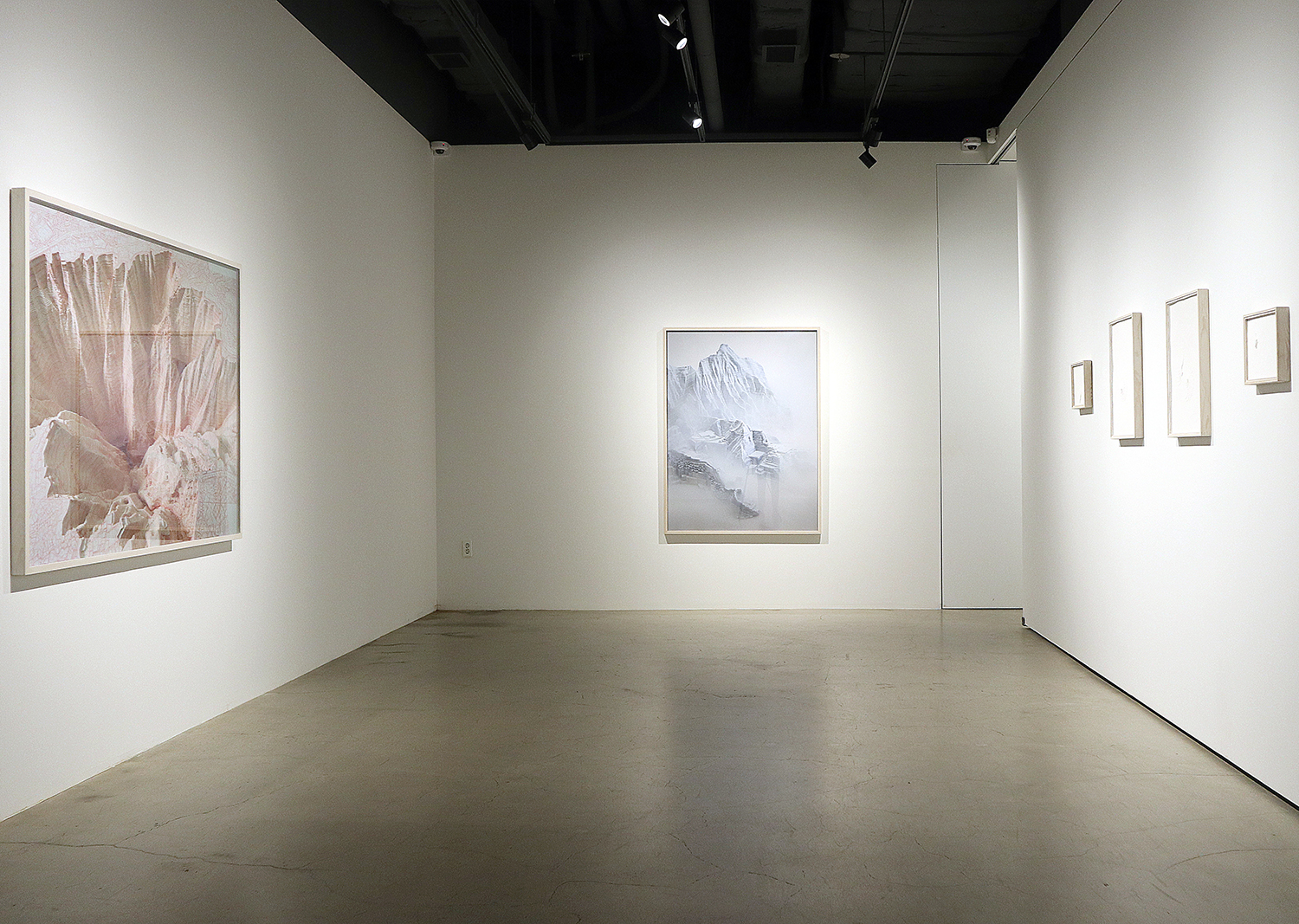Strata&Plants
페이지 정보
Date. 2018.10.05-11.28페이지 정보
Place. 021galleryContents
Strata & plants
Duo Exhibition of Im, Sun-yi and Yoo, Jung-hyun
The exhibition title ‘Strata & Plants’ began with the question of Paul Cezanne - “Is this what I see?” The question about sensory perception ‘seeing' is an interrogatory question about landscape and the world. Is not our gaze on the landscape the gaze that objectifies and owns the landscape as the subject of human being?
At this exhibition, artists Im, Sun-yi and Yoo, Jung-hyun introduce the question about the act of sensory perception of ‘seeing’ by using the mountains and plants of city as motif in photograph and paintings.
The photography and painting are different media, but the center that penetrates the work of two artists is open gaze. It is not a reproduction of mountains and plants. It is the gaze to see the process of strata and layers which wrinkle due to repetition of the differences which are invisible to the eye. The gaze is to objectify and own the landscape but the ambiguous gaze that is unstable and unclear. The landscape of the scenes of the ambiguous gaze presented by the two artists make it possible for viewers to see and communicate themselves.
In the photograph works of Im Sun-yi, Seoul’s representative mountains, Mt. Inwangsan and Mt. Namsan, are used as the motifs, but it is not the landscape of the mountain. It is the image that is enlarged and printed on the photograph taken using fixtures by clipping and stacking the quantified map and artificial lightings.
In <Trifocal Sight 1> <Describing Landscape/ Describing Landscape>, the artist cuts thousands of topographical maps of Mt. Inwangsan along contour, and then stacks up the layers to create a huge canyon-like Mt. Inwangsan model. The artist simultaneously shoots the model of Mt. Inwangsan pattern in close-range view, mid-range view and distant view by using a camera. Here, they use artificial lightings to maximize the shape of the deep canyon. As such, the artist’s extremely difficult carving hands ask us “Is this what I see?”
In <Pole> series, the artist creates the model of Mt. Namsan by cutting and stacking topographic maps of Mt. Namsan, and shoot from various angles by creating a cloud or fog using a device. In the <Pole> series, the cityscape is revealed together with the mountains. Artists give us calm but unstable and shaking gaze by granting the temporality to the invisible strata and the visible cityscape
Yoo, Jung-hyun uses acrylic. The black acrylic which is reminiscent of Chinese ink penetrates into the canvas and dries quickly to form a shape. The artist erase the shape and leaves traces before the permeated shape dries. It is contrary to the method of completing the shape by overlaying paint.
In <City Plants>, the plant is the motif, but it is ambiguous. It is reminiscent of the black shadow of flowers. In the work note, the artist said that the theme of their painting is the irrepresentation through the shape of body and plant and that the irrepresentation to artists is an attempt to visualize the invisible power of senses. The plant becomes a subject without being objectified. The plant that is the subject is not the same layer. It is the layer of differences. This layer is ambiguity that can not have certainty and has no clear criteria. At this exhibition, the artist shows the power of the plant’s essence that is not possessed by our gaze as three ways of expression of repetition, divergence, and trace (work note).





 instagram
instagram artsy
artsy